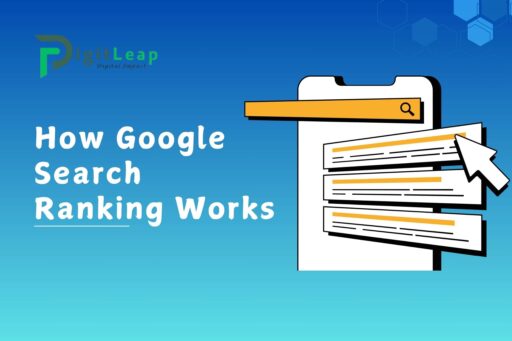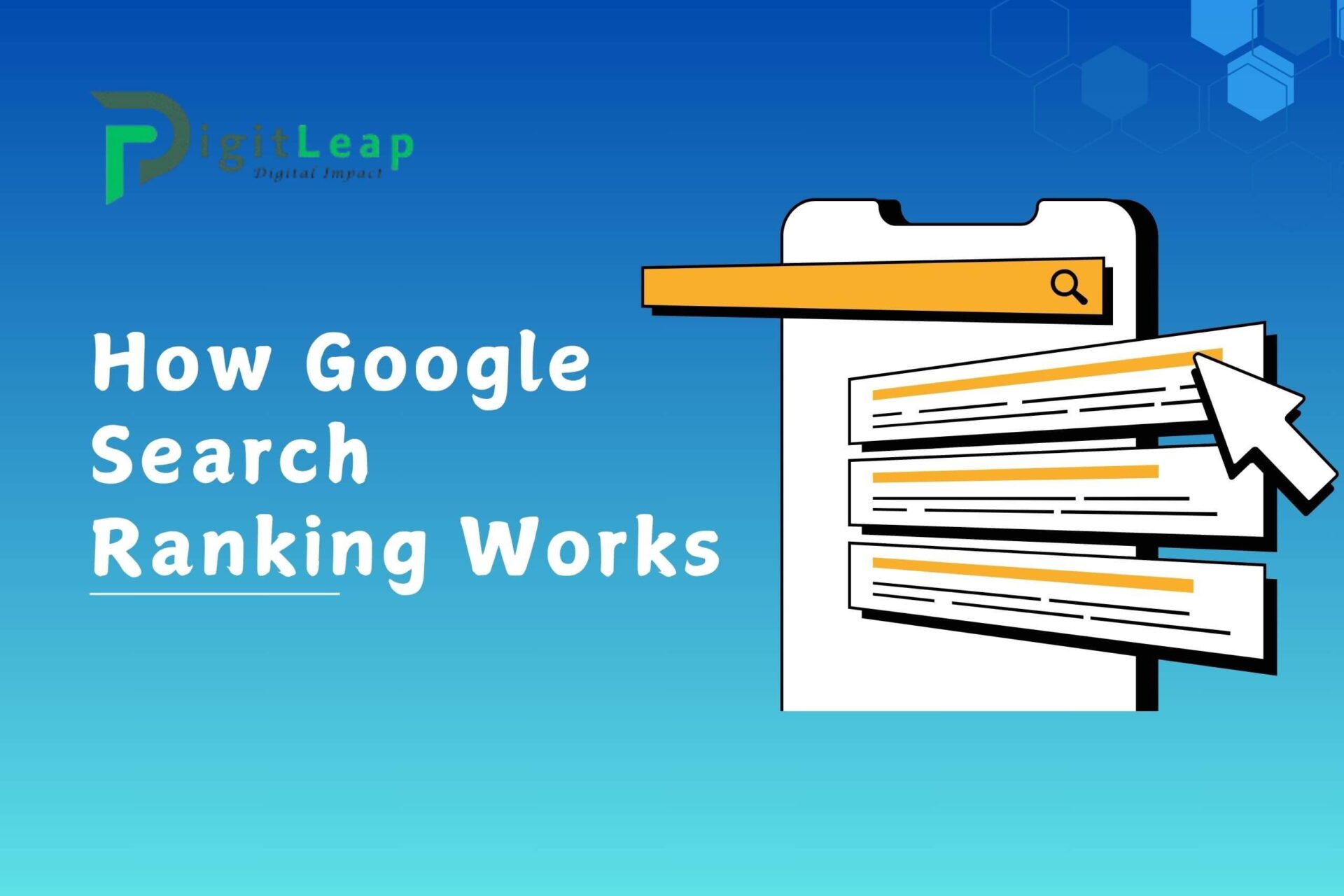Ever wondered how Google decides which web pages show up first when you search for something? It’s not magic—it’s a complex process driven by algorithms and hundreds of ranking factors. In simple terms, Google’s goal is to provide users with the most relevant, useful, and trustworthy results for their queries. In this article, we’ll break down how Google Search ranking works, from crawling and indexing to ranking pages, and what you can do to improve your website’s ranking.
1. Crawling: How Google Finds Your Web Pages
The first step in Google’s ranking process is crawling. Google uses crawlers, or bots (also known as Googlebot), to discover new and updated web pages.
- Crawlers scan the internet by following links from one page to another.
- When a bot lands on your page, it examines the content, structure, and links to see how it fits into the web.
If your page isn’t linked to from other sites or blocked by robots.txt files, Googlebot might have trouble finding it.
Pro Tip: To help Google discover your pages faster, make sure you submit a sitemap in Google Search Console and interlink your pages properly.
2. Indexing: Storing and Organizing Content
After crawling, Google decides whether your content is worth adding to its index. Think of indexing as creating a giant library of web pages.
- Google stores key information from your page, including keywords, title tags, descriptions, and images, to understand what your page is about.
- It also evaluates whether the content is original and valuable. Duplicate, spammy, or low-quality content may not get indexed.
If a page isn’t indexed, it won’t appear in search results—no matter how relevant it is to a search query.
3. Ranking: Evaluating Pages for Search Results
Once Google has crawled and indexed your site, the real competition begins—ranking! The Google Search algorithm evaluates many factors to determine where your page appears in the results for specific search terms.
Key Factors That Affect Google Search Ranking
- Relevance of Content
Google looks at the keywords on your page and matches them with the user’s search query. If your content closely matches the intent behind the search, it’s more likely to rank higher.Example: If someone searches for “how to bake cookies,” Google favors pages that provide detailed cookie recipes rather than unrelated content. - Page Quality (E-A-T: Expertise, Authoritativeness, Trustworthiness)
Google prioritizes content that reflects expertise, authority, and trustworthiness (E-A-T), especially for sensitive topics like health, finance, or legal advice.Pro Tip: Build trust by displaying author bios, linking to credible sources, and earning backlinks from authoritative sites. - User Experience (Core Web Vitals)
Google rewards websites that provide a great user experience. Core Web Vitals focus on:- Page loading speed (Largest Contentful Paint, LCP)
- Interactivity (First Input Delay, FID)
- Visual stability (Cumulative Layout Shift, CLS)
- Mobile-Friendliness
With more searches happening on mobile devices, mobile optimization is essential. Google uses mobile-first indexing, meaning it primarily looks at the mobile version of your site when evaluating content. - Backlinks (External Links)
Backlinks are like votes of confidence from other websites. The more high-quality, relevant sites that link to your page, the better your chances of ranking higher.Note: Not all backlinks are created equal—links from authoritative websites carry more weight than those from low-quality sites. - Search Intent
Google has become smarter at understanding user intent behind queries. It categorizes intent into:- Informational: Searching for knowledge (e.g., “how to lose weight”)
- Navigational: Looking for a specific site (e.g., “Facebook login”)
- Transactional: Ready to make a purchase (e.g., “buy iPhone 15 online”)
- Freshness of Content
Some topics require up-to-date information. For example, Google prioritizes fresh content for searches related to news or trending topics.Example: If someone searches for “best smartphones in 2024,” Google prefers recent articles over older ones from 2018. - Security (HTTPS)
Websites with an HTTPS certificate are given a slight ranking boost. This ensures that the site is secure and protects user data.
How Google’s Algorithms Work Together
Google uses multiple algorithms working together to rank pages. Some of the well-known algorithms include:
- Hummingbird: Focuses on understanding search intent rather than just keywords.
- RankBrain: Uses machine learning to interpret queries and measure user satisfaction through metrics like click-through rate (CTR) and dwell time.
- Panda: Filters out low-quality content.
- Penguin: Targets spammy backlinks.
- BERT: Helps Google understand the context of words in complex queries.
Each algorithm contributes to providing the most relevant and high-quality results for every search.
How to Improve Your Google Search Ranking
- Optimize Your On-Page SEO
- Use relevant keywords naturally in your content.
- Write compelling meta titles and descriptions to improve CTR.
- Use header tags (H1, H2, etc.) to organize content logically.
- Create High-Quality Content
- Focus on creating valuable, in-depth content that answers users’ questions.
- Use visuals like images, videos, and infographics to make your content more engaging.
- Improve Page Speed
- Compress images and use browser caching.
- Use Content Delivery Networks (CDNs) to reduce loading times.
- Build High-Quality Backlinks
- Reach out to industry blogs for guest posting opportunities.
- Create linkable assets like guides, whitepapers, or infographics.
- Focus on User Engagement
- Improve your site’s UX/UI to reduce bounce rates.
- Encourage visitors to spend more time on your page by adding interactive elements like quizzes or videos.
- Optimize for Voice Search
- Use conversational language in your content to capture voice search queries.
- Answer specific questions in a FAQ section to align with voice searches.
How Google Measures User Satisfaction
Google pays attention to user behavior metrics to determine whether searchers are satisfied with the results:
- Click-Through Rate (CTR): Higher CTR indicates that your page is relevant to the search query.
- Bounce Rate: If users leave your page quickly, Google may assume it didn’t meet their needs.
- Dwell Time: The longer users stay on your site, the more likely it is that your content is valuable.
By tracking these metrics, Google continuously adjusts rankings to improve the user experience.
Conclusion
Google’s search ranking process is complex, involving crawling, indexing, and evaluating hundreds of ranking factors to deliver the best possible results. While the exact workings of Google’s algorithms remain a mystery, focusing on high-quality content, user experience, backlinks, and SEO best practices can help improve your site’s visibility. It’s not about tricking the system—it’s about creating valuable content that serves users’ needs.
Understanding how Google ranks pages gives you a competitive edge. By aligning your strategy with Google’s priorities, you increase your chances of landing on the coveted first page of search results. Keep your content fresh, your site fast, and your users happy, and Google will reward your efforts.
FAQs
1. How long does it take to rank on Google?
It can take anywhere from a few weeks to several months, depending on competition, keyword difficulty, and the quality of your SEO efforts.
2. Does Google prioritize mobile-friendly websites?
Yes. Google uses mobile-first indexing, meaning it evaluates the mobile version of your site for ranking.
3. Do backlinks still matter for SEO?
Yes, backlinks remain a critical ranking factor. However, focus on quality rather than quantity.
4. How often should I update my content?
It depends on the topic. For evergreen content, updates every 6-12 months are fine. For news or trends, frequent updates are necessary.
5. Can I rank without SEO?
While some pages may rank naturally due to strong content, SEO strategies significantly improve your chances of ranking well in competitive niches.






